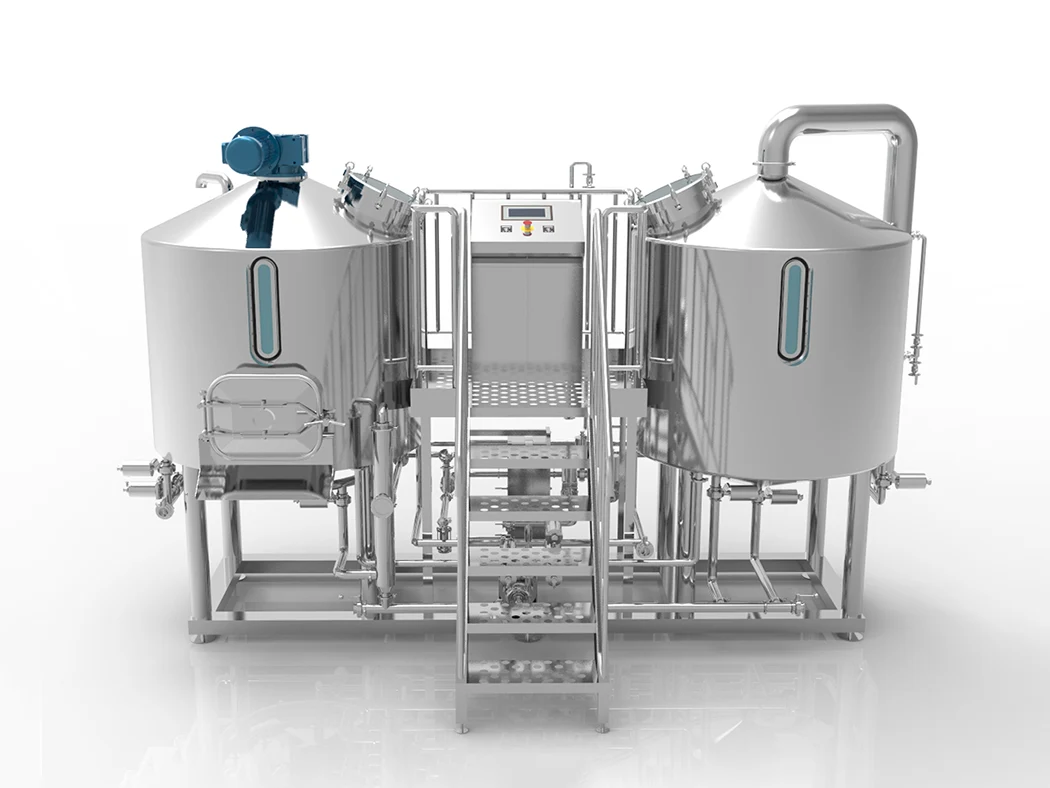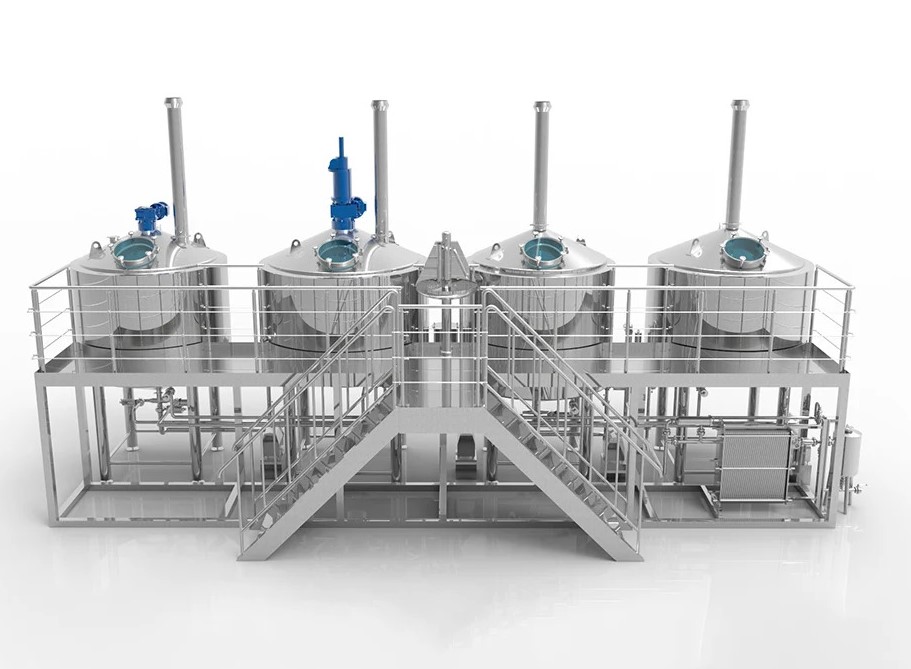Вы столкнулись с проблемой нестабильного качества пива или труднодоступных для чистки емкостей? Плохой контроль брожения может испортить партию пива, привести к потере ингредиентов и испортить репутацию вашей пивоварни. Вам нужно надежное оборудование, которое обеспечит идеальное брожение каждый раз, поддерживая ваше ремесло и рост вашего бизнеса.
Емкости для брожения из нержавеющей стали - это специализированные сосуды, в основном изготовленные из пищевой нержавеющей стали (например, 304 или 316), предназначенные для создания контролируемой, санитарной среды для процесса брожения. Они играют важнейшую роль в пивоварении, виноделии и других видах производства напитков, преобразуя сахар в спирт и CO2 и обеспечивая при этом точное поддержание температуры, легкую очистку (CIP) и, зачастую, сбор дрожжей. Это делает бродильный чан сердце производства напитков неизменно высокого качества.
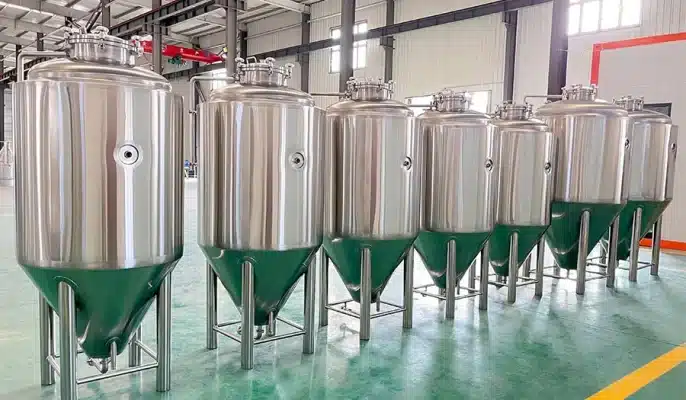
Что такое резервуары для брожения из нержавеющей стали?
В качестве Завод по производству пивоваренного оборудования, мы видим резервуары для брожения из нержавеющей стали это не просто емкости, это точные инструменты, необходимые для приготовления исключительных напитков. Эти специализированные резервуары разработаны специально для процесс ферментацииВолшебный этап, на котором дрожжи преобразуют сахара (из сусло в пиве пивоварениеили сок в виноделие) в спирт и углекислый газ. Обычно изготавливается из высококачественных, нержавеющая сталь (часто 304 нержавеющая сталь или 316 для повышения коррозионной стойкости), эти резервуары разработаны предложить идеально сантехника окружающая среда. Это очень важно, потому что любой Загрязнение может сильно изменить вкус и стабильность конечного продукта.
Дизайн бродильный чан не ограничивается простым сдерживанием. К особенностям часто относятся:
-
Коническая Дно для удобного сбора дрожжей.
-
Рубашка стены для точный контроль температуры.
-
Клапаны сброса давления для безопасности.
-
Порты отбора проб для проверки качества.
-
CIP (Clean-In-Place) системы для эффективной очистки.
Эти резервуары обеспечивают что нежный ферментация тщательно контролируется. Независимо от того, имеете ли вы дело с небольшим стартапом пивоварня или крупномасштабной коммерческой операции, право бродильный чан имеет основополагающее значение. Это сосуд, в котором сырые ингредиенты превращаются в готовый напиток, поэтому его качество и функциональность имеют первостепенное значение для любого серьезного пивовар или производитель напитков. Эти резервуары это действительно рабочие лошадки пивоварня.
Почему нержавеющая сталь является предпочтительным материалом для резервуаров пивоваренных заводов?
Доминирование нержавеющая сталь в пивоварение промышленность, особенно для бродильные ёмкости и резервуары для пивоваренияЭто не случайно. Его свойства делают его уникально подходящим для производства напитков.
Ключевые преимущества нержавеющей стали:
-
Долговечность и устойчивость к коррозии: Это очень важно при работе с кислыми жидкостями, такими как пиво или вино. резервуар не придает нежелательных привкусов и не разрушается со временем. Как производители, мы уделяем первостепенное внимание долговечности и целостности продукта, поэтому нержавеющая сталь доставляет.
-
Чистота и санитария: Непористая поверхность нержавеющая сталь исключительно легко чистить и дезинфицировать. Поддержание сантехника Окружающая среда не подлежит обсуждению во время ферментация. Гладкие поверхности, часто с бесшовный TIG сварных швов, а также совместимость с высокотемпературной очисткой и CIP Системы снижают риск загрязнения, обеспечивая стабильное качество.
-
Инертность: Нержавеющая сталь не вступает в реакцию с напитком, сохраняя желаемый вкусовой профиль, созданный пивовар.
-
Сила: Позволяет резервуары выдерживать давление во время карбонизация или переноса, что делает его идеальным для любых задач - от небольших ферментеры до огромного резервуары для хранения в резервуарный парк.
Эти факторы в совокупности делают нержавеющая сталь бесспорный чемпион по производству материалов для современных пивоваренное оборудование.
Какие существуют различные типы бродильных емкостей?
Мир бродильные ёмкости не является универсальным. Различные напитки и пивоварение стили часто выигрывают от специфических резервуар конструкции. Как эксперты в технологическое оборудованиеМы производим различные типы, отвечающие самым разным требованиям:
| Тип резервуара | Основное использование | Основные характеристики | Лучшее для |
| Цилиндроконические (ЦКТ) | Первичное брожение, кондиционирование, карбонизация | Коническая дно, часто с оболочкой, номинальное давление, CIP совместимость | Большинство современных сортов пива (эль и лагер), сбор дрожжей |
| Brite Tank | Осветление, созревание, карбонизация, сервировка | Рубашка, номинальное давление, карбонизация Каменный порт, смотровое стекло | Кондиционирование, газирование, подготовка упаковки, непосредственная подача на стол |
| Открытый ферментер | Первичная ферментация | Открытый верхпозволяет использовать дрожжи для верхней обрезки. | Некоторые традиционные сорта эля (Hefeweizen, бельгийские сорта), требуют чистого помещения |
| Резервуар переменной емкости | Ферментация, хранение (переменные объемы) | Плавающая крышка регулируется в зависимости от уровня жидкости | ВиноделиеНебольшие партии, минимизирующие окисление |
| Горизонтальный резервуар для пива | Лагеринг (холодное кондиционирование) | Горизонтальная ориентация, с оболочкой | Расширенное холодильное хранение, традиционное лагеринг |
| Штабелируемый ферментер/резервуар | Ферментация/Хранение | Предназначен для вертикального штабелирования | Пивоварни с ограниченной площадью |
Понимание этих различных виды ферментации сосуды помогают пивоваренным заводам выбрать подходящий технологическое оборудование с учетом их конкретных потребностей и желаемых результатов. Сайт конический ферментер остается наиболее универсальным для многих пивоварни.
Как конический ферментер может изменить процесс пивоварения?
Введение конический ферментер (или КСТ) по-настоящему преобразили современную пивоваренные операции. Его оригинальная конструкция обеспечивает ряд преимуществ, которые позволяют оптимизировать производство и повысить качество пива. Наиболее значительное преимущество обеспечивается за счет конусообразное дно. Такая форма позволяет дрожжам и осадок (труха), чтобы компактно оседать на дно резервуар. Сбросной клапан на вершине конус позволяет пивовар Легко удаляйте этот сор, не нарушая при этом пивной процесс, что позволяет получить более чистое пиво и снизить необходимость в фильтрации.
Кроме того, этот же клапан позволяет собирать дрожжи. Здоровые дрожжи, собранные из конус можно повторно использовать в последующих партиях, что позволяет сэкономить средства и сохранить уникальные свойства домашних дрожжей. Многие конические ферментеры Кроме того, они рассчитаны на давление и оснащены охлаждающие рубашки. Это означает:
-
Главная ферментация
-
Вторичный ферментация (созреваниелагеринг)
-
Карбонизация
...могут возникнуть в пределах одного и того же резервуар. Это минимизирует перенос, снижая риск окисления и загрязнения каждый раз, когда вы переместить пиво. Для любого пивоварня стремятся повысить эффективность и последовательность, инвестируя в высококачественные Емкости для брожения и осветления из нержавеющей стали является игровым инструментом. Сайт конический ферментер объединяет несколько этапов в один эффективный, сантехника одно судно.
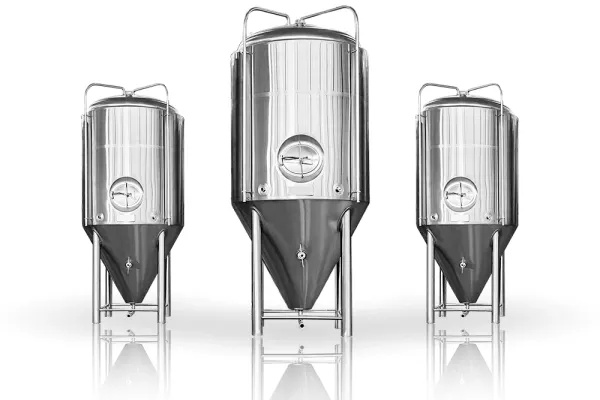
Какую роль играют танки Brite в производстве пива?
Аквариумы BriteИногда его называют светлым пивом. резервуары или кондиционирование резервуарыиграют решающую роль на последних стадиях производство пивапреодолевая разрыв между ферментация и упаковки. Хотя основной ферментация происходит в ферментеры (часто конические ферментеры), the британовый бак это место, где пиво созревает, осветляется и газируется. Считайте, что это финишный сосуд, который готовит пиво к подаче или продаже. Его название происходит от "светлого" (прозрачного) пива, которое получается в результате происходящих в нем процессов.
После того как основная масса дрожжей и осадок удаляется после брожения, пиво переливается в британовый бак. Здесь его можно охладить с помощью танк охлаждающая рубашка для дальнейшего осветления - белки и оставшиеся дрожжи оседают, в результате чего продукт становится более прозрачным. Важно, бритые цистерны Они рассчитаны на давление, что позволяет пивоварам принудительно карбонизировать пиво до точного уровня путем впрыскивания CO2. Факт: Поддержание определенного уровня карбонизации (например, 2,5 объема CO2) необходимо для получения желаемого вкуса и внешнего вида большинства сортов пива. Этот контролируемый карбонизация обеспечивает последовательность. Сайт британовый бак также служит в качестве холдинга резервуар перед упаковкой, обеспечение последовательности качество всей партии. Эти обслуживание резервуаров пиво при правильной температуре подачи и карбонизация Это делает их незаменимыми для пивоварен, которые обслуживают непосредственно резервуары и для упаковочных линий. Они незаменимы резервуары для пивоварения для получения отточенной, готовой к продаже продукции крафтовое пиво.
Можно ли использовать резервуары из нержавеющей стали для производства вина и других напитков?
Конечно! Несмотря на то, что он в значительной степени ассоциируется с пивоварение, резервуары из нержавеющей стали невероятно универсальны и широко используются в виноделиеПроизводство сидра, комбуча, дистилляция и даже более широкая сфера деятельности. продукты питания и напитки промышленность. Те же свойства, которые делают их идеальными для пива, - инертность, долговечность, легкость очистки и контроль температуры способности - высоко ценятся в этих секторах. На сайте виноделие, резервуары для брожения из нержавеющей стали предлагать точные регулирование температурычто очень важно для управления температуры брожения и сохраняет тонкие ароматы. Оба открытый верх и закрыт резервуары из нержавеющей стали используются, иногда с охлаждающие змеевики или куртки, в зависимости от желаемого стиля вина. Вы можете изучить специализированные Премиальные резервуары для брожения вина и оборудование для винодельни разработаны специально для этих целей.
Для комбучи, резервуары из нержавеющей стали предоставлять сантехника среда, устойчивая к кислотному характеру пива. Дистилляторы используют нержавеющая сталь для пюре резервуары, ферментерыи хранения, ценя его нейтральность и прочность. Даже помимо алкогольных напитков, в промышленности используются резервуары из нержавеющей стали для смешивания, хранения и обработки различных жидкостей. Мы также производим специализированные ЕМКОСТИ ДЛЯ СМЕШИВАНИЯ для различных областей применения. Адаптивность и надежность резервуары из нержавеющей стали делают их краеугольным камнем современных напитков и жидкостей технологическое оборудованиеВ этом случае вы не только пивоварня. Мы предлагаем резервуары различных размеров для любого масштаба производства.
Насколько важен контроль температуры в бродильных емкостях?
Контроль температуры во время ферментация является, пожалуй, одним из наиболее важных факторов, влияющих на конечный характер пива, вина или любого другого ферментированного напитка. Деятельность дрожжей очень чувствительна к температуре; разные температуры способствуют образованию различных вкусовых соединений (эфиров, фузиловых спиртов). Промышленные данные свидетельствуют о том, что даже отклонение от заданной температуры брожения на 1-2°C (2-4°F) может существенно изменить вкусовой профиль многих сортов пива. Поэтому, имея точный контроль температуры в вашем бродильные ёмкости имеет первостепенное значение для обеспечения постоянства и качества.
Большинство современных резервуары для брожения из нержавеющей сталиособенно конические ферментеры и бритые цистерны, включить охлаждающие рубашки. Это секции с двойными стенками на резервуар тело (а иногда и конус), по которым циркулирует охлаждающая жидкость (например, гликоль). Подключенные к системе охлаждения, эти куртки позволяют пивоварам точно регулировать температура ферментацииповышая или понижая его по мере необходимости для разных штаммов дрожжей и стадий развития. ферментация (например, диацетиловый отдых, холодное охмеление). Этот регулирование температуры Обеспечивает оптимальную работу дрожжей, создавая желаемый вкусовой профиль и минимизируя стресс. Постоянный температуры брожения Приводят к стабильным партиям, что является отличительной чертой профессиональных пивоварение. Без эффективного системы охлаждения интегрированный в резервуар При этом добиться воспроизводимых высококачественных результатов значительно сложнее. Сайт куртка является ключевой характеристикой качественного бродильный чан.
Какие характеристики следует искать в высококачественных резервуарах для пивоварения?
При инвестировании в резервуары для пивоваренияНеважно, являются ли они ферментеры, бритые цистерны, или резервуары для храненияНесколько характеристик указывают на качество и хороший дизайн, гарантируя, что они будут служить вам пивоварня и прослужит долгие годы. Как производители, мы уделяем особое внимание этим ключевым аспектам:
-
Качество материала: Всегда выбирайте еду.нержавеющая сталькак правило нержавеющая сталь 304 или 316L. Убедитесь, что толщина стали соответствует резервуар размер и номинальное давление.
-
Качество сварки: Ищите гладкую поверхность, сантехника сварные швы, предпочтительно TIG сварка и внутренняя полировка до уровня Ra <0,6 мкм. Некачественные сварные швы могут стать местом обитания бактерий. Лазерная сварка куртки часто указывают на передовое производство.
-
Эффективность охлаждающей рубашки: Обеспечьте охлаждающая рубашка обеспечивает достаточную площадь покрытия (часто 30-50% боковины) для эффективное охлаждение и точный контроль температуры. Утолщенные куртки распространены и эффективны.
-
Сантехнические фитинги и дизайн: Все порты, клапаны и соединения должны быть сантехника трехзажимные или DIN-фитинги для легкой разборки и чистки. Внутренняя поверхность должна быть гладкой, с закругленными углами, и потенциально наклонное дно (в неконических резервуарах) для слива воды. Ищите элементы, облегчающие CIP системы (например, вращающийся распылительный шар).
-
Номинальное давление: Обеспечьте резервуар (особенно бритые цистерны и унитазы) сертифицирован на требуемое давление (например, рабочее давление 15 PSI / 1 Бар, испытательное давление 30 PSI / 2 Бар). Надежный клапан сброса давления (PRV) является важным элементом безопасности. оборудование.
-
Полезные порты: Учитывайте количество и расположение портов для температурных зондов (гильз), отбора проб, карбонизация камни, рычаги для крепления стеллажей (как у Speidel конструктивная особенность, позволяющая отводить жидкость над осадок), и CIP шары-распылители. Вращающийся стойка рука очень полезна.
-
Доступ к люку: Убедитесь, что люк (верхний или боковой, предпочтительны бестеневые конструкции) обеспечивает достаточный доступ для осмотра и ручной очистки при необходимости, при этом герметично закрывается под давлением.
-
Персонализация: Можно ли резервуар быть с учетом требований ваш конкретный пивоварня расположение, отношение высоты к диаметру предпочтения или технология процесса потребности?
Инвестиции в хорошо продуманные резервуары с этими функциями принесет дивиденды в виде простоты использования, эффективности уборки, потребление энергиии, в конечном счете, качество и консистенция ваших напитков. Не забудьте проверить наличие необходимых Запчасти для пивоваренного завода и совместимость с фурнитурой.
Как ухаживать за бродильными емкостями из нержавеющей стали и чистить их?
Поддержание чистоты и целостности вашего резервуары для брожения из нержавеющей стали имеет решающее значение для предотвращения загрязнения и обеспечения долговечности. К счастью, нержавеющая сталь Свойства делают это относительно простым, особенно с разработанные резервуары для легкой очистки. Стандартная процедура включает в себя очистку на месте (Clean-In-Place).CIP), что сводит к минимуму ручной труд и обеспечивает тщательную очистку.
Типичный цикл CIP:
-
Предварительно промойте: Промойте резервуар удалите рыхлую почву и остатки с помощью воды.
-
Каустическая мойка: Циркулируйте горячее (например, 60-80°C / 140-176°F) щелочное моющее средство (на основе каустической соды 1-3%) через CIP опрыскивайте шар в течение 20-30 минут. Это разрушает органические вещества.
-
Промежуточное ополаскивание: Тщательно промойте водой, чтобы удалить едкий раствор. Проверьте pH, чтобы убедиться в нейтральности.
-
Кислотная промывка (периодическая): Пропустите раствор кислоты (например, 0,5-1,5% смеси фосфорной и азотной) при температуре окружающей среды или слегка повышенной температуре в течение 15-20 минут для удаления минерального налета (пивного камня) и пассивации. нержавеющая сталь. Это можно делать еженедельно или ежемесячно в зависимости от жесткости воды и режима использования.
-
Окончательное ополаскивание: Тщательно промойте питьевой водой до полного удаления чистящих средств (проверьте pH/проводимость).
-
Дезинфекция: Непосредственно перед заполнением резервуар с сусло или напитка, циркулируйте не смываемое дезинфицирующее средство (например, PAA - надуксусная кислота в рекомендуемой концентрации) в течение необходимого времени контакта (часто 5-15 минут). Этот шаг очень важен для санитарная ферментация.
Регулярный визуальный осмотр резервуар Внутренняя отделка, сварные швы и прокладки также важны. Правильное обслуживание гарантирует, что ваш резервуары из нержавеющей стали остаются в оптимальном состоянии, обеспечивая идеальная среда для ферментация партия за партией. Резервуары обеспечивают качество при правильном уходе.
Выбираете правильный размер и конфигурацию резервуаров для пивоварни?
Выбор подходящего размера и конфигурации для вашего ферментация и бритые цистерны это критическое решение, влияющее на рабочий процесс, производственные мощности и эффективность. Речь идет не только об объеме, но и о количестве резервуары и их особенности имеют огромное значение. Для стартапов универсальный Пивоварня 300 л может быть идеальным вариантом, обеспечивающим гибкость. По мере роста компании ее потребности меняются.
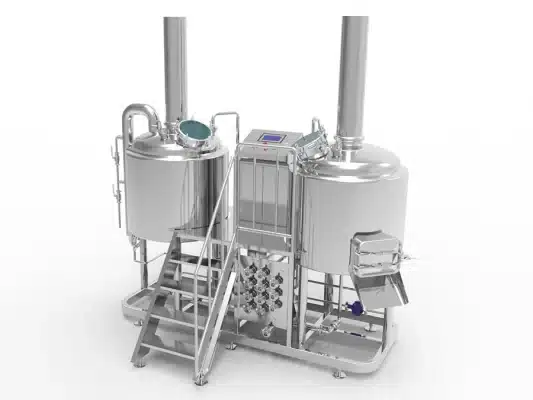
Ключевые соображения:
-
Пивоварня "Матч": Ферментеры часто имеют размер, кратный размеру партии в пивоварне (например, в пивоварне на 10 баррелей может использоваться 10 баррелей, 20 баррелей или даже 40 баррелей). ферментеры). Двойной или четверной размер резервуары позволяет готовить несколько сортов пива в одном ферментер.
-
Время выполнения заказа: Подумайте, сколько времени каждая партия будет занимать резервуар. Эль бродит быстрее, чем лагер. Дольше лагеринг иногда требуется больше резервуар мощность.
-
Скорость и сочетание продаж: Как быстро продается ваш продукт? Нужно ли вам иметь в наличии много разных сортов пива одновременно (требуется больше или меньше резервуары) или большие объемы меньшего количества пива (требующие меньшего количества, большие резервуары)?
-
Количество резервуаров: Общей отправной точкой является наличие 4-6 ферментеры и 1-2 бритые цистерны на одну пивоварню. Это позволяет обеспечить непрерывный цикл пивоварения.
-
Физическое пространство: Точно измерьте высоту подвала и площадь пола. От этого зависит допустимая резервуар диаметр и высота (отношение высоты к диаметру), потенциально влияя на ферментация динамика и необходимость выбора таких вариантов, как штабелируемые резервуары.
-
Будущий рост: План расширения. Инвестиции в небольшое количество большие резервуары или обеспечить пространство для дополнительное оборудование может быть более экономичным в долгосрочной перспективе.
Нужна ли вам компактная 60L емкости для опытных партий или огромных партий большие резервуары для регионального пивоварняТщательное планирование с учетом этих факторов имеет большое значение.
Сотрудничество с производителем для изготовления резервуаров и технологического оборудования на заказ
Выбор правильного поставщика для вашего резервуары для пивоварения так же важно, как и выбор резервуары сами. Вам нужен партнер, который понимает все нюансы пивоварение и производства напитков, предлагая не только резервуары, но также всесторонняя поддержка. Как опытный Завод по производству пивоваренного оборудованияМы гордимся тем, что предоставляем высококачественные и индивидуальные решения. с учетом требований уникальные потребности каждого клиента - от стартапа пивоварня владельцы для создания виноделие операции и разнообразные предприниматели, занимающиеся производством напитков.
Мы предлагаем широкий ассортимент резервуары из нержавеющей стали, в том числе конические ферментеры, бритые цистерны, резервуары для хранения, винные резервуары, и специализированные технологическое оборудование. Наш особенность резервуаров прочная конструкция, сантехника дизайн, эффективность охлаждающие рубашкии соблюдение строгих стандартов качества (например, сертификация сосудов под давлением ASME, если требуется). Мы понимаем, что каждый пивоварня у всех разные, поэтому мы тесно сотрудничаем с вами, чтобы настроить резервуары которые соответствуют вашему пространству, процессу и бюджету. Помимо оборудования, мы предоставляем:
-
Консультации по детальному проектированию.
-
Технические знания и чертежи.
-
Варианты поддержки при установке.
-
Оперативное послепродажное обслуживание.
Обеспечение вашего пивоваренные операции Мы стремимся к тому, чтобы все прошло гладко. Независимо от того, ищете ли вы один ферментер или полностью "под ключ Система пивоварения 1000 лСотрудничество со знающим и надежным производителем гарантирует, что вы получите исключительное качество оборудование, созданное для производительности и долговечности. Позвольте нам помочь вам создать сердце вашего пивоварня.
Часто задаваемые вопросы (FAQ)
В чем разница между ферментером и брайт-баком?
A ферментер (часто конический ферментер) используется в основном для главного ферментация процесс, в ходе которого дрожжи превращают сахара в спирт. A британовый бак используется после первичного ферментация для осветления, газирования, созревания и выдержки напитка перед упаковкой. Ферментеры занимаются биологической трансформацией, в то время как бритые цистерны отделка рукоятки.
Почему для емкостей для брожения пива предпочтительны конические днища?
Конические днища позволить дрожжам и осадок (труха), чтобы компактно собраться в самой нижней точке резервуар. Это позволяет легко собирать дрожжи для повторного использования и удалять отбросы, в результате чего пиво становится чище без необходимости стойка весь объем с осадок. Такая конструкция значительно повышает эффективность и чистоту пива в бродильный чан.
Как часто требуется замена резервуаров для пивоварения из нержавеющей стали?
Высококачественный резервуары из нержавеющей сталиПри правильном уходе и чистке они могут служить десятилетиями (обычно 20-30 лет и более). Нержавеющая сталь очень прочный и устойчивость к коррозии. Замена обычно связана с необходимостью расширения, желанием обновить технологию (например, сделать ее более эффективной). охлаждающие рубашки), или, в редких случаях, повреждение. Их долговечность делает их надежной долгосрочной инвестицией для любого пивоварня.
Можно ли использовать один резервуар для ферментации и карбонизации?
Да, резервуары Для этого предназначены так называемые "юнитэнки". Как правило, они конические ферментеры Они рассчитаны на давление (обычно не менее 1 бар/15 PSI) и оснащены такими функциями, как охлаждающие рубашки и карбонизация камни. Использование унитаза позволяет первичным ферментация, вторичный ферментация (кондиционирование/лагеринг), и карбонизация произойти в одно судно, восстановительные переносы и потенциальное окисление.
Что такое пассивация и почему она важна для резервуаров из нержавеющей стали?
Пассивация - это химический процесс (часто включающий промывку кислотой, обычно на основе азотной или лимонной кислоты), который удаляет свободное железо с поверхности нержавеющая сталь и способствует образованию более толстого и равномерного защитного слоя оксида хрома. Этот пассивный слой значительно повышает танк устойчивость к коррозии, обеспечивая долговечность и предотвращая попадание металлических привкусов в напиток. Это важнейший этап, особенно после изготовления или сварки, для поддержания резервуары из нержавеющей стали.
Существуют ли альтернативы нержавеющей стали для резервуаров для брожения?
В то время как нержавеющая сталь преобладает в профессиональной среде, однако существуют и альтернативные варианты. Пластик (ПНД) ферментеры распространены в домашнее пивоварение и некоторые нанопивоварни из-за более низкой первоначальной стоимости, но они могут быть склонны к образованию царапин (бактерий) и более проницаемы для кислорода. Деревянные танки (пенообразователи) используются для специальных программ по выдержке и квашению пива для придания уникальных вкусовых качеств, но их гораздо сложнее чистить и обслуживать. сантехника условия. Для профессионального, постоянного производства, требующего долговечности и санитарных условий, резервуары из нержавеющей стали остаются отраслевым стандартом.
Основные выводы по резервуарам для брожения из нержавеющей стали
-
Материал имеет значение: Нержавеющая сталь (304 или 316) является стандартом долговечности, чистоты и безопасности продукции.
-
Типы служат целям: Выберите Конические ферментеры для универсальности, Аквариумы Brite для отделки, а другие - в зависимости от конкретных потребностей (лагеринг, виноделие).
-
Температура имеет решающее значение: Точный контроль температуры через охлаждающие рубашки качество и постоянство не подлежат обсуждению.
-
Особенности качества: Расставьте приоритеты сантехника дизайн, качественные сварные швы, эффективная охлаждение, соответствующие номинальные значения давления и удачно расположенные порты.
-
Уборка - это главное: Внедрить надежную CIP режим (промывка, каустик, ополаскиватель, кислота, ополаскиватель, дезинфекция) для резервуар здоровье и безопасность продукции.
-
Размер и конфигурация: План резервуар объем и количество в зависимости от размера пивоварни, производственного цикла, объема продаж и площади помещения.
-
Выбирайте партнера с умом: Выберите производителя, предлагающего качественные пивоваренное оборудование, возможности настройки и надежная поддержка.

